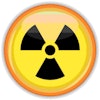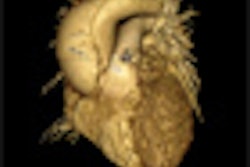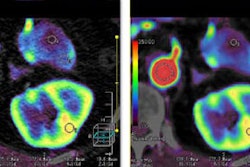Timing the start of CT data acquisition until a predefined level of contrast liver enhancement is achieved provides superior lesion conspicuity and improved standardization of image quality when performing follow-up CT exams of cancer patients, according to an article published online 5 November in European Radiology.
The importance of reducing variability in liver enhancement is that chemotherapy may be the only treatment option for cancer patients who do not qualify for surgery. Serial measurements of lesion size or volume help determine if the chemotherapy treatment is effective or ineffective.
The increased value of using liver parenchyma triggering was determined by a multicenter collaboration of German, Italian, and U.S. radiologists. They conducted a study comparing images acquired from CT scans of 50 patients using two different multidetector-row CT protocols for liver imaging. The patient cohort included 25 consecutive patients for each group -- all diagnosed with hepatic metastases -- who had baseline CT and two follow-up CT exams.
Patients in both groups included those weighing between 45 and 75 kg. Slimmer or heavier patients were excluded, but no criteria included height or body mass index constraints. All patients had focal liver lesions that were presumed to be metastases. The patients were relatively matched with respect to completion of chemotherapy treatment at the time the follow-up exams were performed.
One protocol, which ceased to be used after 2005, delayed acquisition of liver images until 65 seconds after initiation of bolus at 3 mL/sec using an automated power injector. The replacement protocol, initiated in January 2006, automatically triggered imaging at a predefined threshold for liver parenchymal enhancement of 50 Hounsfield units (HU).
Two 1-cm regions of interest were positioned in the right lobe at the level of the portal vein, and visible vessels or lesions were avoided. Low-dose (120 kV, 50 mA) images were obtained every three seconds following a delay of 40 seconds, and the CT examination was started five seconds after reaching the threshold of 50-HU enhancement. If this threshold was not reached after 90 seconds, the radiographer intervened and manually started the CT data acquisition.
Two blinded radiologists evaluated images from a total of 150 CT examinations. They were asked to assess the standardization of enhancement, lesion conspicuity, and contrast patterns, and also compare the variability of follow-up examinations. For every patient, the largest presumed metastasis was selected on the baseline CT exam and subsequently tracked on the two follow-up exams.
The new protocol produced much better results, according to lead author Dr. Harald Brodoefel of the department of diagnostic radiology at Eberhard-Karls-University in Tübingen, Germany. The 50-HU liver enhancement goal was reached in 91% of CT exams in which the automated triggering protocol was used, compared with only 63% for the standard-delay protocol group.
Liver attenuation and enhancement were substantially larger in the triggered series, as was contrast conspicuity of hypoenhancing lesions or lesion components. Although attenuation in the aorta was similar in both groups at the portal-venous phase, CT attenuation in the portal vein was significantly higher for the triggered group.
Liver triggering also was associated with reduced variability for liver enhancement across serial follow-up examinations in individual patients and also among different patients. Twenty patients in the triggered group displayed uniform lesion enhancement patterns across serial examinations compared with only 11 in the delayed group.
"Such superior reproducibility of lesion patterns does markedly improve the overall quality of oncology CT examination and promotes confidence in lesion classification and assessment of therapy response," the authors wrote.
They also suggested that the automated triggering technique holds the promise of standardizing the quality of portal-venous enhanced imaging and permits more accurate monitoring of cancer patients.



















